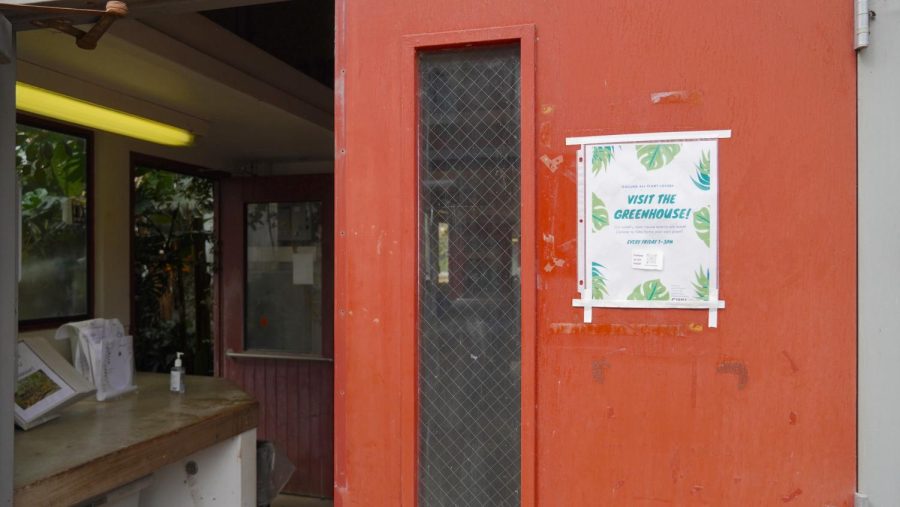Plants to Plates event aims to educate people about the relationship between humans, tools and food
Front Door of Greenhouse
April 26, 2023
The CWU Biology greenhouse and Museum of Culture and Environment drew connections between humans, tools, food and sustainable eating at the Plants to Plates event on April 22.
Linnea Stavney, the manager of the greenhouse and vivarium, where CWU students research plants and reptiles through the Biology Department, said that the Plants to Plates event is a first of its kind.
“This is a one-of-a-kind event,” Stavney said. “But that said, the Biology department frequently partners with the museum for different events.”
The MCE kicked off the event with the exhibit, “Sustenance: The Material Culture of Food.” The exhibit showcased food tools to show how humans have harvested and eaten food throughout history.
“They have a number of different sections on food preparation, storage, serving and eating, and then also a section on water and tools to drink water,” Stavney said. “They have artifacts from all over the world…they’re trying to explore the relationship between humans and tools.”
The greenhouse focused on showcasing plants that are useful to animals and humans.
“We have lots of fruits like pomegranate, papaya, pineapple, guava,” Stavney said. “We also have things like chocolate, coffee, vanilla, sugarcane and then even some edible flowers.”
The food plants in the greenhouse and the food tools in the MCE bring to life a visual connection between the food people eat and how that food was harvested and prepared.
“A lot of people really aren’t very connected to the process of food, it’s pretty easy to just go to a fast food restaurant or get a frozen meal and not think about where it came from, how it was prepared or the history of that food,” Stavney said.
Another goal of the Plants to Plates event was to highlight the importance of sustainable farming practices and the benefit of growing our own food.
“One of the biggest impacts you can make environmentally is changing your diet,” Stavney said. “You can go strictly as extreme as only eating local food or becoming vegan, but even small changes like eating less red meat and having a more plant based diet. And if you can grow some of your food, even just growing some herbs on your windowsill is a really great way to get reconnected with nature and the environment and start being more conscious about that. Every little impact makes a really big difference.”
While the event had low attendance on April 22, the greenhouse and MCE still have open hours for students and community members.
The MCE is open Wednesday-Saturday from 10 a.m. to 4 p.m. and will have the “Sustenance: The Material Culture of Food” exhibit open through June 10.
Besides the Plants to Plates event, the CWU greenhouse is open Fridays from 1-3 p.m. for anyone to come in and view the wide variety of plants and even interact with reptiles.

